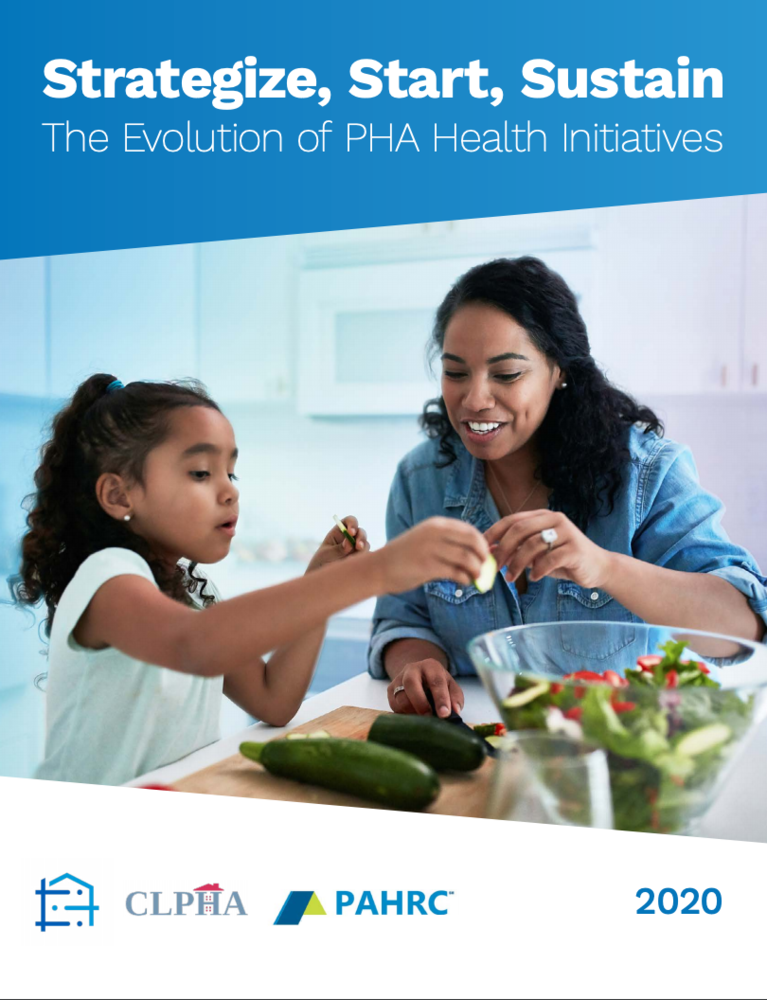Stakeholders across sectors serving low-income Americans increasingly recognize that breaking down silos can produce more positive life outcomes and promote effective service delivery. Specifically, intersections between housing and health have recently gained attention as the housing sector has embraced “health in all policies,” and the health sector has increasingly sought to address social determinants of health like housing. Underscoring the impetus for these initiatives is the high medical need of the population served by housing assistance programs.
A survey by the Council of Large Public Housing Authorities (CLPHA) sought to learn more about the prevalence and types of health partnerships large public housing authorities are implementing to serve the health care needs of their residents. CLPHA published the survey findings in the Department of Housing and Urban Development’s research publication Cityscape. The article,
Connecting Fragmented Systems: Public Housing Authority Partnerships With the Health Sector, shows:
-
Large PHAs report high engagement with public health entities and community-based social service providers
-
Respondents also report working with healthcare service providers, including behavioral health providers and federally qualified health centers.
-
The most common health-related activities in which PHAs are engaged include healthcare service coordination (87 percent) and improving healthy community resources (67 percent).
-
Perceived barriers to establishing health-housing partnerships and health-related programming or alignment include concerns about privacy or liability and lack of resources or capacity.
To gain a better understanding of the work that smaller and mid-sized PHAs are doing to address the health care needs of their residents, CLPHA partnered with the Public and Affordable Housing Research Corporation to survey a larger sample size about their health care initiatives and collaborations. The combined findings, published in the May 2018 report,
Health Starts at Home A National Snapshot of Public Housing Authorities’ Health Partnerships, show:
• Half of PHAs are engaged in health-related initiatives and almost all of them rely on external health partners to provide services and programming to some extent.
• Large PHAs (in number of total units) report higher rates of health partnerships compared to small and medium-sized PHAs.
• Nearly three-fourths of PHAs with health-related initiatives partner with public health and community-based human and social service providers.
• Over half of all PHAs with health-related initiatives focus on preventative health, mental health conditions, and substance use disorders.
• Around half of PHAs with health-related initiatives are addressing tobacco use cessation, general wellness, diabetes, and heart disease.
• Health-related initiatives are overwhelmingly targeted to seniors, however PHAs also report targeting health initiatives to a wide array of groups.
• Few PHAs have dedicated health staff, instead relying on resident services and other staff to facilitate health partnerships and activities. PHAs typically draw from limited internal funds or rely on external health partners to fund health activities.
• Lack of dedicated staff and funding were the most commonly cited barriers to increasing health-related initiatives and partnerships.
Both reports were published as part of
CLPHA’s Housing Is Initiative to help build a future where systems work together to improve life outcomes for low-income people.
Housing Is helps broaden and deepen efforts to align housing, education, and health organizations to produce positive long-term outcomes for those experiencing poverty. Collaboration across systems and sectors—through shared goals, focused resources, and coordinated efforts—strengthens our collective ability to serve the needs of low-income individuals and families effectively and efficiently.
Public housing offers many low-income children, families, and seniors critical stability, but fragmented service delivery systems and siloed policymaking often fail to address social determinants of low-income individuals and families holistically. This often results in stagnant effectiveness and costly inefficiencies.
CLPHA leads the affordable housing industry as a convener of partners across sectors who are committed to aligning different systems and developing interdisciplinary programs to address a variety of essential needs in communities across the country. From promoting data sharing and shared accountability to encouraging cross-sector training and evidence-based interventions, our work fosters improved, sustained alignment and collaboration.
